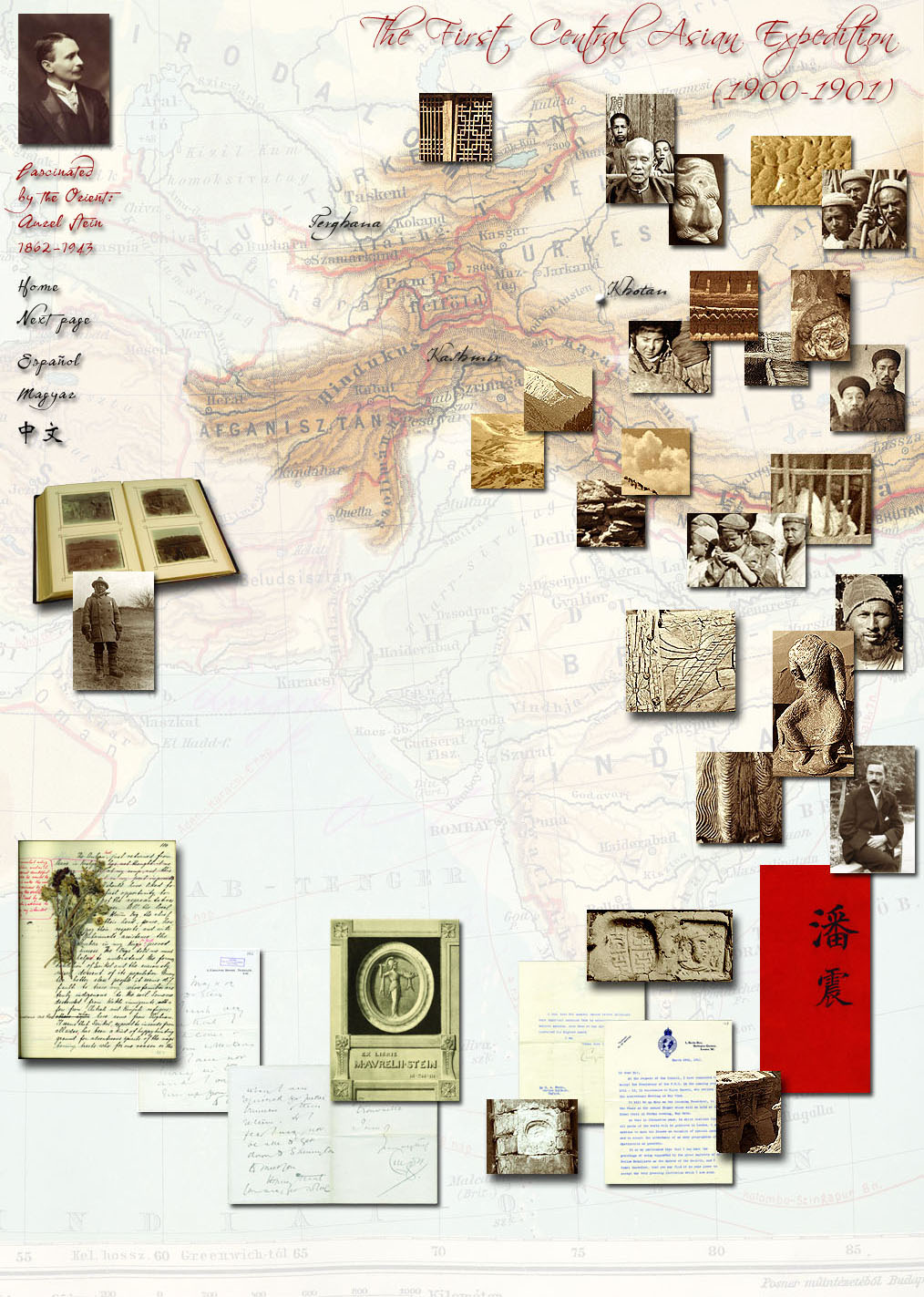
 Starting
from his base in Kashmir
Starting
from his base in Kashmir
in May 1900, Stein travelled across Gilgit to the
Hindukush chiefship of Hunza. By the end of June, after
crossing the Kilik Pass, Stein arrived to the Chinese
territory at the head of the Taghdumbash Pamir.
Descending eastwards to Tashkurghan, it became possible to
figure out the ancient topography of Sarikol by identifying
the localities which the great Chinese pilgrim Xuanzang had mentioned
when passing there in 649 C.E. Stein later referred to Xuanzang as his
“patron saint”, because on his expeditions in Chinese Central Asia, he
followed in the footsteps of this 7th century Buddhist monk who
travelled
from Central Asia to India, returning later to China with Buddhist
sutras.
In Ilchi, the capital of the Khotan district, Stein had evidence of the
practice of forging old books, and possibly
other antiques. He then travelled into the desert, later surveying and
mapping the Kunlun range. He visited
ancient sites of Yotkan, Dandan-Uiliq, Niya, Rawak and Endere.
In May 1901 his journey, undertaken on horseback and by foot, covering 3,000 miles, came to its end at Osh, Ferghana, and he returned to Europe across Russia.
 Stein
published a popular account of the first expedition entitled
Sand-buried
Stein
published a popular account of the first expedition entitled
Sand-buried
Ruins of Khotan (1903), and the detailed archaeological report
Ancient Khotan
(2 volumes, 1907).
